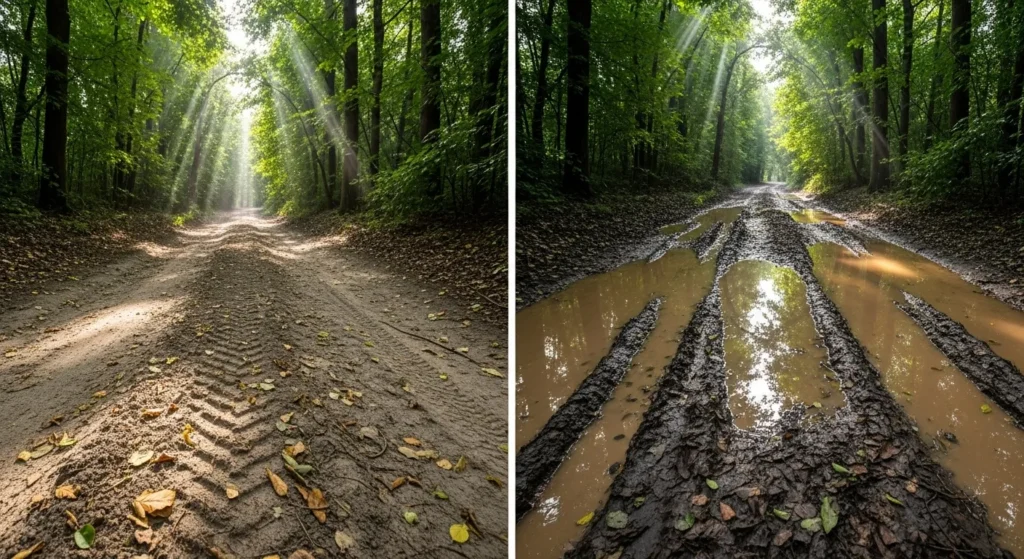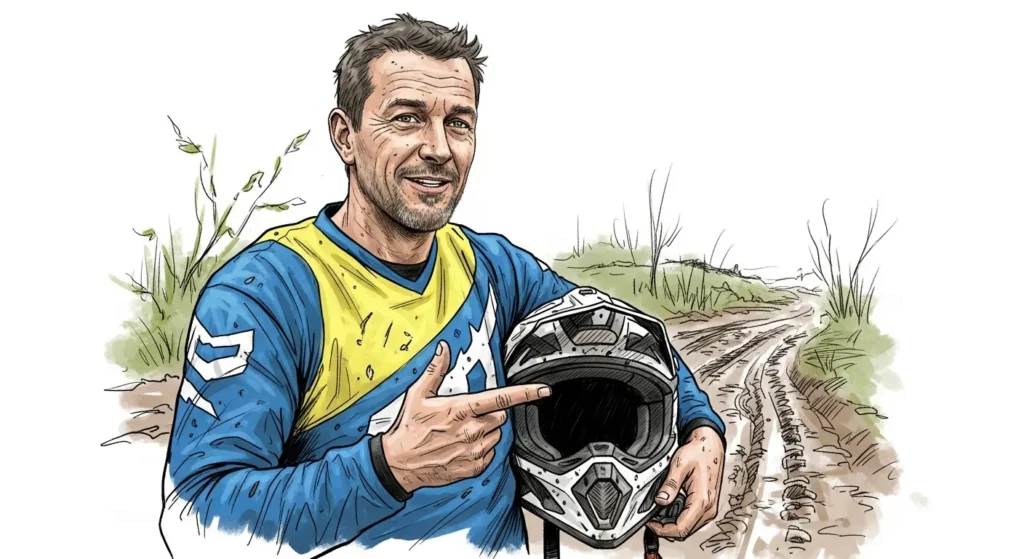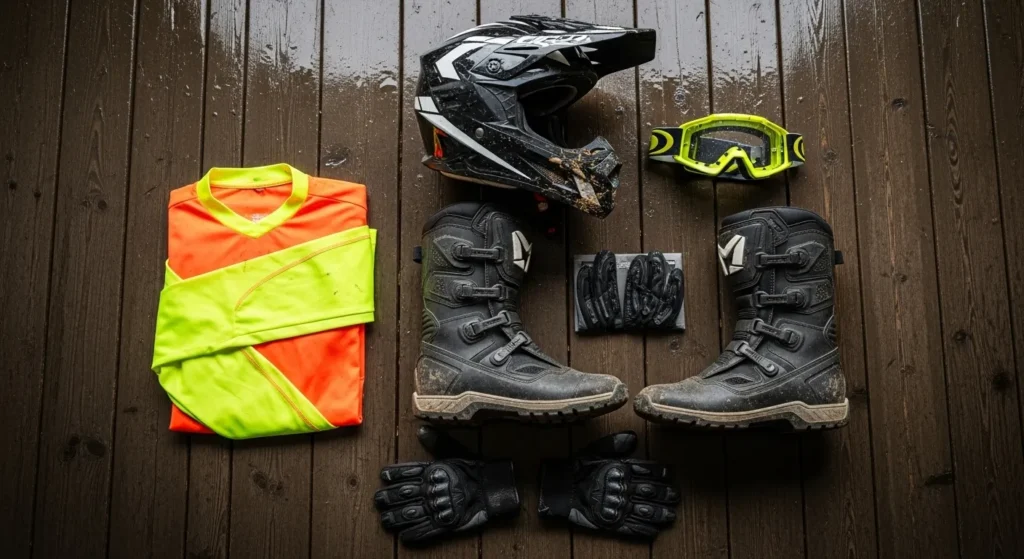Dirt biking is something that is hard to resist. It is freewheeling on a throttle. But when the rain stops and the skies clear up and the trail is wet and slick, the rules are entirely different. Off-road riding after rain is not the same thing on a motorcycle, it is unforgiving, unpredictable, but so satisfying, nonetheless, to the adrenaline junkies.
Whether you have it slick, mud-slick, washboarded ruts that have already sucked the life out of every ounce of bike handling expertise to total squirming hiplock, the post-rain outing needs a certain amount of planning, a bit of know-how, and some respect to begin with. The thing is, it is not only courage, it is tactics, experience, and familiarity with the machine to the point of feeling it as a part of your body.
Trail Conditions and Gear Overview

| Category | Details |
|---|---|
| Terrain Changes | Mud puddles, waterlogged soil, slippery roots, and hidden ruts |
| Recommended Tires | Soft terrain or intermediate knobbies with deep treads |
| Bike Prep Tips | Clean air filter, waterproof grease for linkages, chain lubed post-ride |
| Best Time to Ride | 1–3 days after rain for tacky but manageable terrain |
| Essential Gear | Waterproof boots, goggles with tear-offs, rain-ready jersey and pants |
| Maintenance Musts | Check brakes, flush wet dirt from suspension, re-lube chain and bearings |
| Common Rider Mistakes | Over-speeding into slick corners, underestimating puddle depth |
| Skill Focus Areas | Clutch control, balance, throttle modulation, line selection |
| Safety Priority | Always ride with a buddy, avoid flash-flood zones or heavy clay trails |
| More Info Source | Dirt Rider Magazine – Post-Rain Riding Tips |
The Art and Science of Riding Post-Storm Trails
During the recent years enduro riders and motocross professionals gained the ability to look at the post-rain conditions not as the problem-but as the training field. Driving in muddy conditions develops balance and reaction speed as well as few other settings. Throttle finesse and razor-sharp control of a clutch are taught to the riders.
You are riding on instinct when the rain is just lifting. It will train you to scan the terrain as a tracker would,” comments professional off-road trainor and former GNCC GNCC [November 01] racer James Hollister. You get to know how to trust your tires, your suspension and the most important thing is to trust yourself and your judgment.
The sticky soul commonly referred to as hero dirt can be very grippy immediately following the surface commencing to dry. However, this golden window does not take long. Hang around any longer and you find yourself in deep pits of mud or clay slippery hills that drain out your bikes power and your confidence.

Why Riding Motorcycle After Rain Tests More Than Just Your Bike
Riding in wet conditions gives your body and mind a work out. Vision is needed when rain hits your goggles and begins to block your vision. Your boot placement, once an automatic thing, now needs to be pinpoint. Every groove is now a trap.
Broader Impacts:
- Bike Durability: Your bike is often ridden in the rain, without proper cleaning up afterwards, which affects the life of your engine and chain directly.
- Industry Trends: New categories of weatherproof motorcycle clothing and all-season dirt tires are in an upswing, as companies such as Alpinestars and Michelin are making products that are designed along the specifications of rainy or post-rain riding.
- Environmental Caution: Wet trails should be over-ridden as this causes extreme erosion. Riders will no longer base their rides on trail sustainability with conservation-minded minds.

Expert Tips for Riding Motorcycle After Rain
Here’s a breakdown of what the pros do:
- Lower Tire Pressure
Lesser PSI (1/2 lbs) and larger contact patch of tires are provided to offer more traction. - Avoid Hard Braking
Rear brake under moderation; the use of the front brake on wet path is a washout that is waiting to occur. - Stand More, Sit Less
Makes the center of gravity responsive and reacts quicker to the feedback of the trail. - Throttle Smoothly
Sharply turn, and this will result in spin-outs; accelerate gradually and change to second gear at technical areas. - Scout Before You Commit
In particular, walk sections, which appear harmless, especially in enduro cases.

Real World Scenario: The Cost of Overconfidence
One particular rider, Tyler Moreno, who rides the Appalachian single-tracks, was riding the trail only a few hours following a downpour. His mud had not been cleaned of his bike after 12 miles, and the rear linkage of his bicycle seized because of it, not to mention failing to clean and maintain after his ride. A week after that it was going to cost him 600+ in repairs and one lost weekend of racing.
Tyler learned it the hard way, he said. You can ride after rain, but do not make fun of the trail-or it will do it to you if you will.”
Conclusion: Rain Is the Equalizer
When it comes to riding dirt bikes, there is no discrimination when it comes to rain. It tests both the newbies and the veteran players. However, it is the students who take to heart the lessons of riding after a storm response; preparation, patience and flexibility, who find that they are better, more aware riders, with a greater understanding of their machines and how the earth moves.
So when the rain clears next, and the forest is petrichor and promise filled go prepared. Ride responsibly. And that the mud should say something the hard-nailed trail never can.
